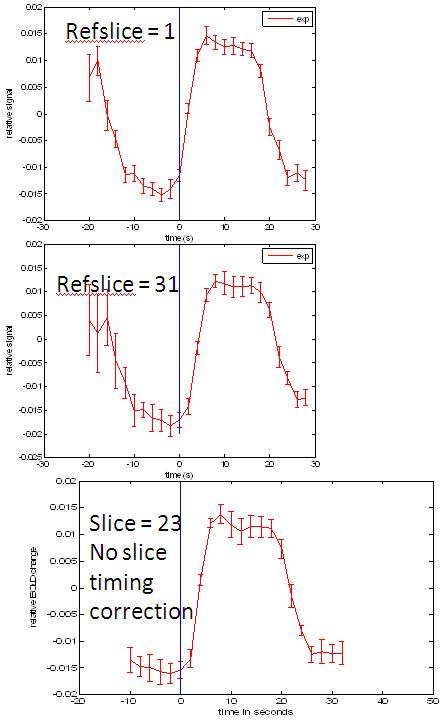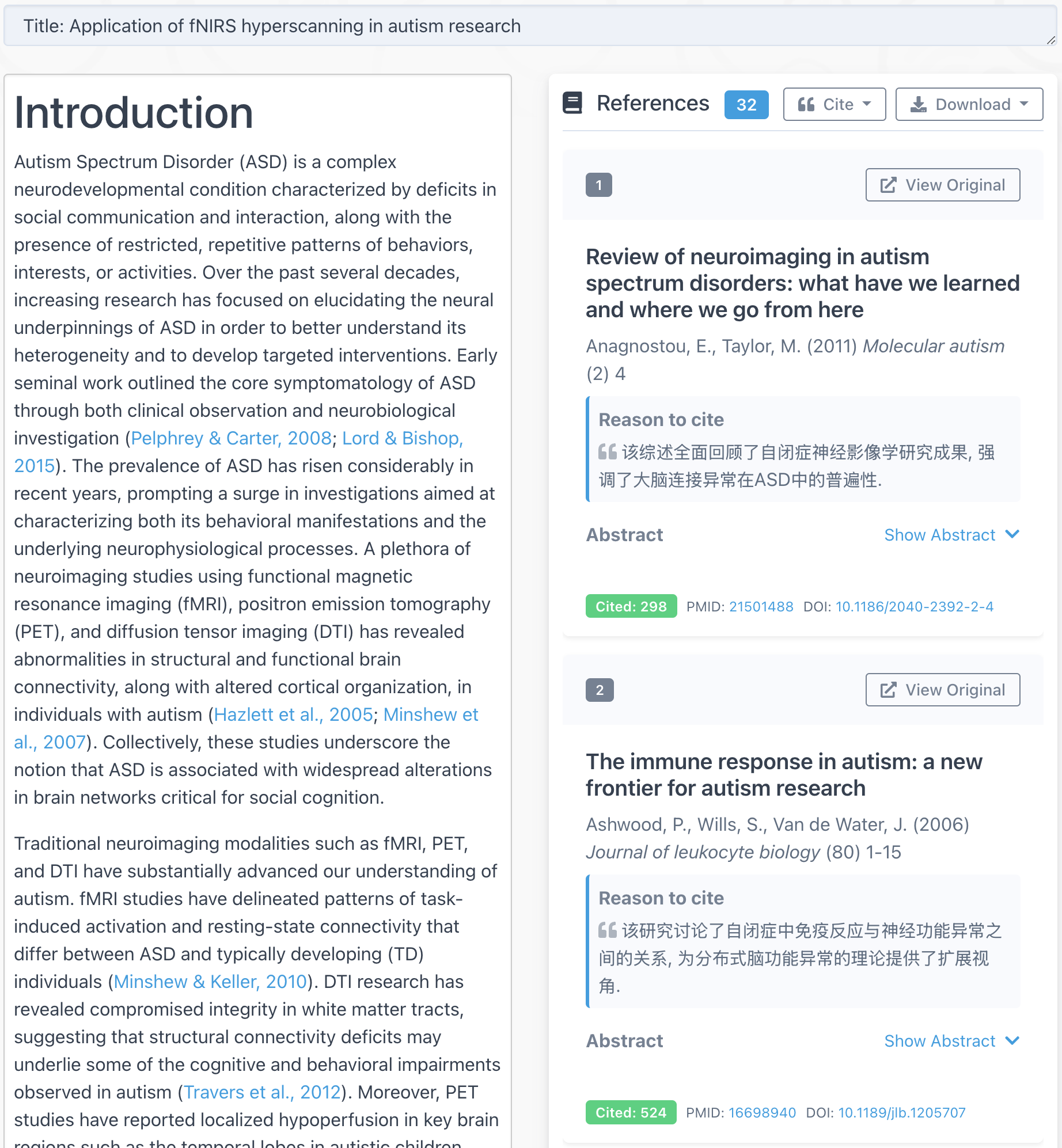I saw at least two web pages saying that the reference slice can be chosen during slice timing correction. For example, http://www.fil.ion.ucl.ac.uk/spm/doc/manual/spatial.htm. I disagree.
Let’s take the first volume as example. Assume TR=2 and number of slices are 31. During data analysis (GLM or ROI analysis), we assume that the first volume is at time 0. In reality, the first acquired slice in this volume is at time 0, the 2nd is at time 2/31, the 3rd 4/31, and so on. The 31st slice is acquired at time 60/31. So except for the first acquired slice, the timing of all other slices should be corrected (or shifted) to time 0. That means, only the 1st acquired slice can be the “reference slice”. Reference slice is not a choice in data preprocessing step.
In SPM’s convention, slice #1 is the most bottom slice which may or may not be the first acquired slice depending on the slice order. Assume the slice order is descending (meaning data are acquired from top to bottom). Then the first acquired slice is slice #31; and the last acquired is slice #1. So in this case, the reference slice should be 31, and the slice order is 31, 30, 29, …, 1.
Choosing a wrong reference slice can affect the timing of your signal. Below I plotted the fMRI signal time series in motor cortex in a finger tapping experiment (tapping for 15s, rest 20s). The top plot is for reference slice = 1, the middle plot is for reference slice = 31. For the bottom plot, I did not do slice timing correction at all. I simply plot the time series in this region (which is at slice #23, or 0.5 seconds away from #31). The vertical line indicates the onset of tapping instruction. Click to zoom the figure.
You can see from the above plot that the rising timing of the signal can be off by 2s if difference reference slice is chosen. Does this matter? It depending on if timing is important to your experiment. For a block design, it’s probably fine; but for event design, or when the question you address is about timing, then this is important.
(The only preprocessing done on the images are reslicing to the first volume. No normalizing, smoothing etc ).




Agree. I also found that using a different reference slice changed my GLM results (event-related analysis).
well, I actually disagree on this issue. First of all, the ref slice selection is a subject preference. If you select the 1st or last slice as ref slice, you also need to do corresponding event timing adjustment when you specify the design matrix in SPM. This latter procedure ensures that the ref slice maps with the event timing well.
Also, give the slice-timing correction tends to get more inaccurate with longer time delays, when TR = 2s, for example, people tended to choose the middle slice so that the maximum correction is 1 sec not 2 sec if you choose the 1st or last slice as ref slice.
@Jian
Yes, if you do event timing adjustment then you can choose whatever ref slice. But it seems many people are not aware of this.
about 2nd point: I thought about this and think there is no “better” ref point (slice). If you choose the middle slice as ref, then you need to adjust the 1st and last slice by 1s; if you choose the 1st slice as ref, you need to adjust the middle slice by 1s, but you don’t need to adjust the last one by 2s, because the last slice is very close to the 1st slice in the next TR so you only need to adjust by TR/n second (n is number of slices). The periodicity of the scanning, I think, makes no slice a better ref slice in terms of accuracy of temporal interpolation.
@xu
I am glad we can communicate this way! :), again, congrats for the new daddy!
as to the 2nd point, I still think choose the middle slice as ref slice would save people a lot of hassle since every slices with that specific TR is aligned well, and you only need to remember one lag. Instead, if you choose the 1st slice as ref slice, and decide to align the last slice with the first slice (ref slice) of next TR, then you need to worry about that for this specific slice, you have a different ref point, and I don’t think SPM or any conventional Statistic package allow you to deal with slices that are “acquired” at different time and automatically adjust that.
for the event timing adjustment in the design matrix, do you mean the hrf with time derivative? But, I was suggested not to use this option…
@Ting Xiang
Some people adjust the onsets of events in their designs, but the correct SPM way for doing this is adjusting microtime resolution and onset. Sorry for posting at such an outdated discussion, but someone may occasionly find it on google just like me 🙂
How is the microtime computed in SPM? Is it an upsampling via interpolation?